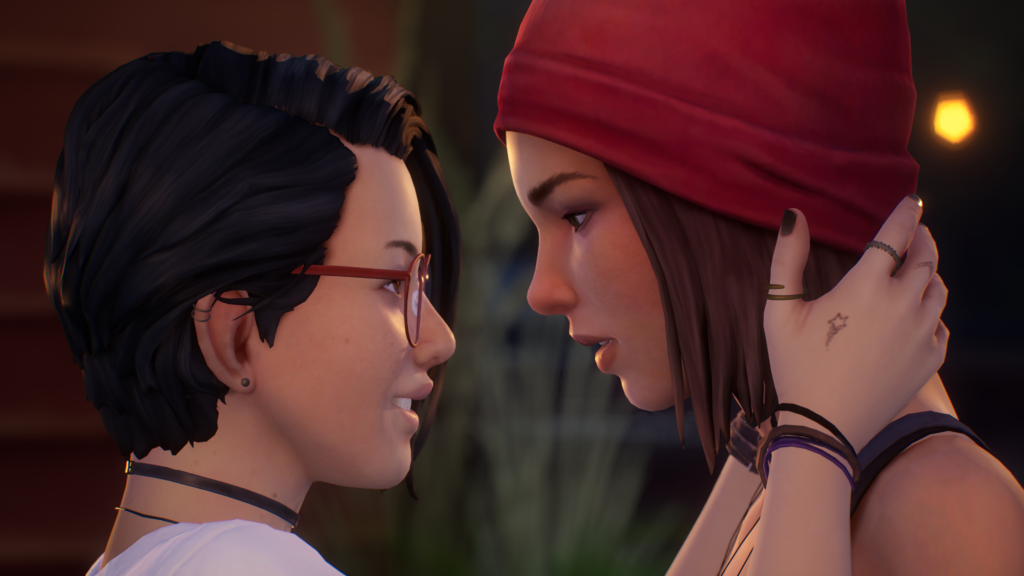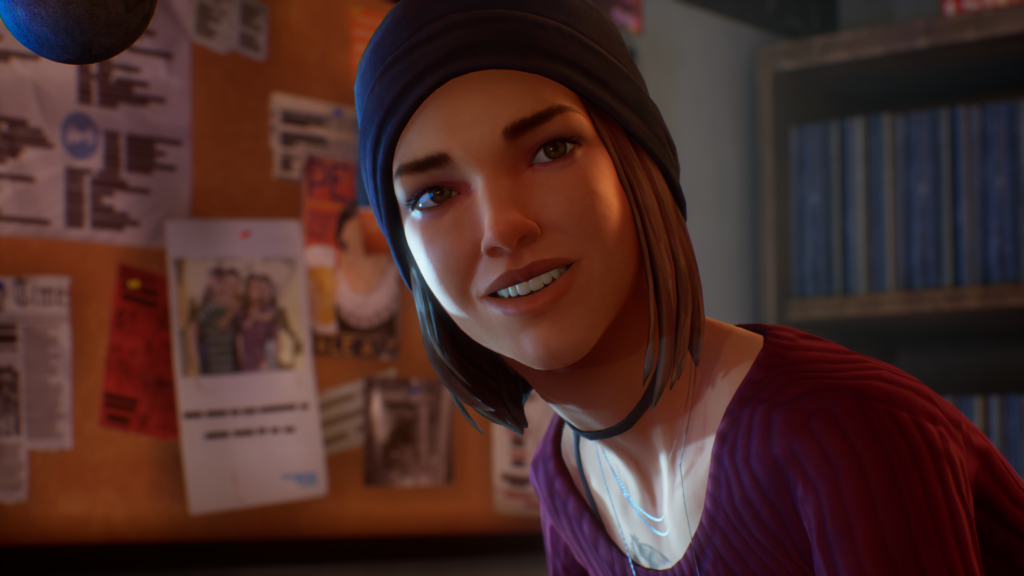
The Life is Strange series success lies in telling stories not told before
Life is Strange is a series made up of three games, a ton of spin-offs, a handful of comics, and a community made up of fans who are eager to show their dedication to the series through fanfiction, art, podcasts, and so much more. Its community is a living, breathing entity that even now, a little over a month after Life is Strange: True Color’s release, are eager to fill up the space to create and celebrate.
It’s not hard to see why. When the original Life is Strange was released in 2015, the success was on a scale that was meaningful. And not just for the purpose of showing corporations that there was a real thirst for fantastic stories over adrenaline-pumping gameplay, but for conveying that queer stories with LGBTQ+ characters could be successful too. It’s this triumph – as well as years of other games bringing more and more queer narratives to games – that led to Life is Strange: Before the Storm, Life is Strange 2 and, of course, Life is Strange: True Colors.
With each new game released, Life is Strange tells a different story that hasn’t been seen in the triple-A gaming space before. To find out more about Life is Strange and how the franchise has developed over the years, including the effect of fandom, diversity, and inclusion has had, we got the chance to talk to Mallory Littleton, Senior Narrative Designer from Deck Nine.
“The Life is Strange franchise has such a great history of telling stories that are frequently left out of video games and succeeding, not in spite of telling those stories, but because of them.” Littleton tells us. “The reputation the franchise has garnered over the years gave us the confidence we needed to make bold choices with Alex, our protagonist.”
Indeed, the original Life is Strange was a massive hit, but by today’s standards, it was also rather safe. One of the biggest criticisms was that the town of Arcadia Bay was incredibly white, something which the series tried to address in Before the Storm but ultimately fell short on. Until Life is Strange 2, a game that looked at racism in America, as well as themes such as toxic masculinity, brotherhood, and a world cowed by white supremacy.
Years later and True Colors doesn’t go too far into exploring Alex Chen’s Asian-American roots, but the Deck Nine team have done their utmost to give her background the careful consideration it deserves. More accurately, it was important for the team as a diverse group of developers to have Alex be someone who wasn’t just a white, queer lady in the same way Max, Rachel, and Chloe were. As monumental as these three ladies were in the world of gaming back in 2015 and 2017, it’s 2021 and Deck Nine knew that now was the time to make some bold decisions with their protagonist.

Even outside of just Alex, Littleton tells us that it was pivotal that they cast Asian-American talent to play the whole Chen family instead of just using white voice actors. “We know first-hand how bad it can feel to never get to see someone like you on the screen, or to see the people like you done poorly, so we worked really hard to get it right.”
Even so, the developers wanted to make sure that Alex wasn’t just someone whose story is linked entirely towards her being bisexual – aka, a narrative that focuses entirely on her coming out, etc – or one that was steeped in tropes. Of course, Littleton acknowledges that there is indeed value in those stories, but it wasn’t something that they were looking for. Instead, Littleton tells us that they wanted to make sure that what they were telling about Alex was deliberate to the story of what they wanted to tell. They wanted her to be deep and interesting, and have a realistic body type and, ultimately, the forefront of her story would be that of “a young woman finding her place in the world the same way that everyone must, regardless of their background.”
Alex’s journey from a young girl who always puts others first leads to an ending where she instead must make the right decision for her. It’s such a kicker of a finale because it comes from deep in Alex’s subconscious, where she finally acknowledges that in spite of all the things she’s done to help others, it’s time to find value about her own self and put herself first. It’s Alex’s growth that Littleton kept returning to in order to spark her own love and excitement for the game when going through “the inevitable ups and downs” of game development.
“By the end, Alex finds a way to see value and worth in herself that doesn’t come from what she can provide to other people. I know that when I was in a time of my life that was similar to where Alex is when she starts the story, I looked for my own value in the things that I could do for people, or the ideas that I could have, or basically anywhere I thought I could find it.” Littleton says. “But the problem with thinking like that is that everyone has bad days, and those bad days can make you feel worthless. It took me a long to come to understand that I had value just in being me. I hope, if anyone out there is feeling that same way, that True Colors can help them learn the same thing.”

Another thing that was necessary to get right for Deck Nine was how queerness could be expressed in-game, and not just from the main characters, but in the world the player inhabits. While representation will always be significant in video games, the environment and how the world around the player interacts and reacts to that queerness is something that holds its own weight too. Otherwise it can feel as though the inclusion of queer characters are used solely as tokens, used by studios to score brownie points or worse, that queerness is an opt-in option that can be ignored by players completely.
According to Littleton, Deck Nine wanted to make sure that diversity is right at the heart of Haven Springs and, better yet, it can’t simply be glossed over. “[We have] included some other NPCs in the world that are undoubtedly LGBTQ, like a local man who decides he wants to write novels, and his somewhat confounded but supportive boyfriend. […] Queer folks are out in the world in True Colors, living their lives, just like in the real world.”
Steph Gingrich also plays a significant role in the Life is Strange series in general, but its especially true for True Colors, and just like in Before the Storm, she’s a character that has never been afraid to talk openly about her sexuality. So, even if you somehow miss the glaring environmental cues of the LGBT+ flags, badges, and the hard-to-miss boyfriend NPCs who lovingly support one another, Steph is one big reminder to not just queer players, but everyone, that this game respects its LGBTQ+ audience with its whole chest.
In fact, one of the things that Littleton wants queer fans in particular to take away from True Colors is that, in spite of the all too often experiences of LGBTQ+ characters in our media having their happy endings ripped away from them, there is a “place out there for them, and a community that they can build for themselves.”
Considering current world events, where our trans brothers and sisters are constantly belittled and put in danger, with politicians and organizations so eager to cast a blind eye at best and cause direct harm at worse, and where our rights to exist hang on the precipice of a knife point… it feels comforting to see a place inhabited by people like us that are happy. A wish fulfillment maybe, but one that we’ll hold onto with both hands.







